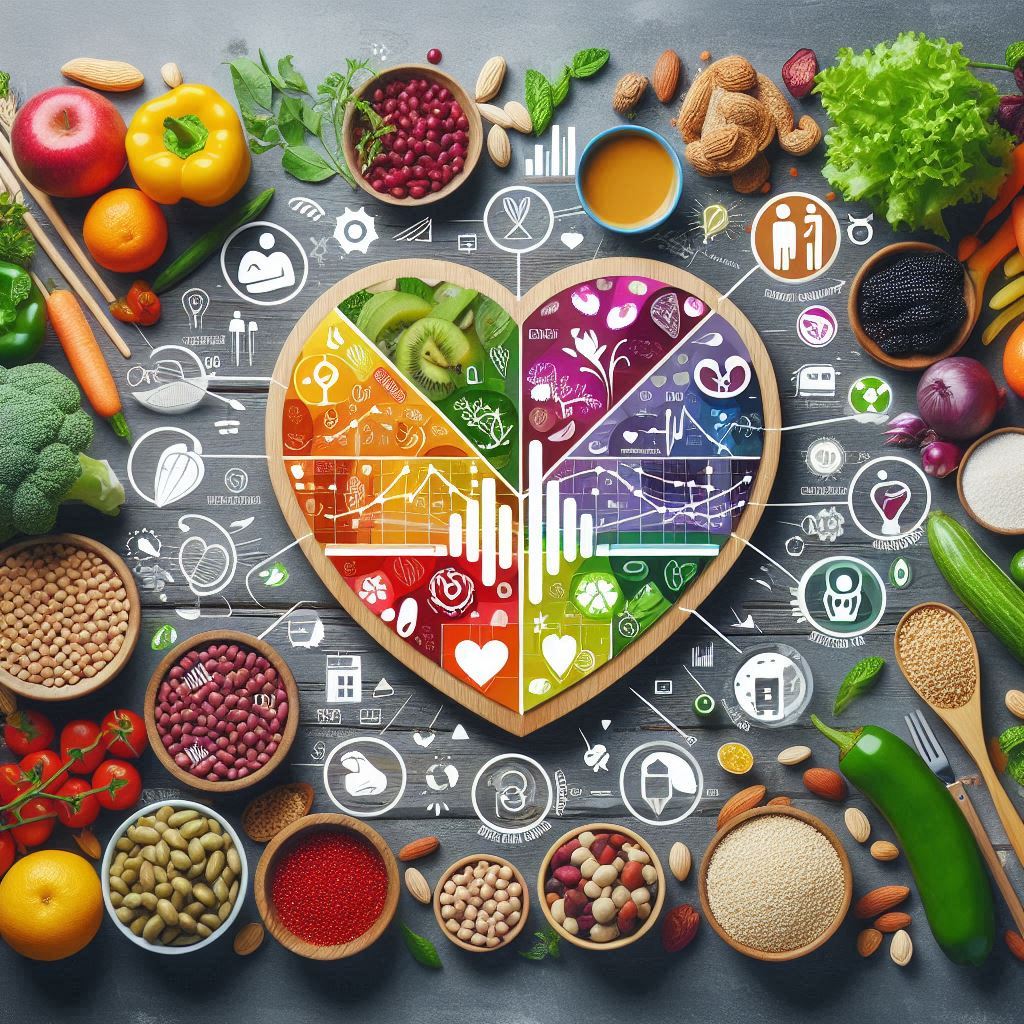What Plant-Based Diets should Take on Metabolic Syndrome ?
Understanding the Impact of Plant-Based Diets on Metabolic Syndrome: Insights from South Korea In recent years, plant-based diets have garnered significant attention as a healthier dietary choice that could help prevent chronic diseases. However, while the benefits of eating plant foods are widely celebrated, not all plant-based diets are created equal. A recent study sheds light on this crucial aspect, exploring the association between unhealthy plant-based diets and metabolic syndrome (MetS) in a population-based study conducted in South Korea. What is Metabolic Syndrome? Metabolic syndrome is a cluster of conditions that increase the risk of heart disease, stroke, and type 2 diabetes. The key components include abdominal obesity, high blood pressure, elevated fasting glucose levels, high triglyceride levels, and low high-density lipoprotein (HDL) cholesterol levels. According to the study, around 23.3% of adults surveyed in South Korea had metabolic syndrome, a significant public health concern that calls for effective dietary intervention strategies. Overview of the Study This study was conducted by researchers Hyunju Kim, Kyueun Lee, Casey M Rebholz, and Jihye Kim. It is one of the first to explore the link between plant-based diet indices and metabolic syndrome. The researchers analyzed data from 14,450 Korean adults aged 19 and older. This data was collected during the Korea National Health and Nutrition Examination Survey from 2012 to 2016. They assessed dietary patterns using a semi-quantitative food frequency questionnaire (FFQ). This helped categorize participants into three diet indices: Overall Plant-Based Diet Index (PDI), Healthy PDI (hPDI), and Unhealthy PDI (uPDI). Understanding the Diet Indices Interestingly, all three indices penalize animal food intake, emphasizing a plant-based approach while also recognizing the importance of food quality. 1. Overall Plant-Based Diet Index (PDI) 2. Healthy Plant-Based Diet Index (hPDI) 3. Unhealthy Plant-Based Diet Index (uPDI) https://fuelforlife365.com/ The way plant foods are categorized plays a significant role in understanding their potential health impacts. While PDI includes all plant foods, recognizing the distinction between healthy (hPDI) and unhealthy (uPDI) plant foods can help guide individuals towards healthier eating patterns that support metabolic health and reduce the risk of conditions like metabolic syndrome. The quality of dietary choices should be emphasized to ensure the benefits of plant-based eating are fully realized. Key Findings of the Research The study revealed some striking insights: Association with Unhealthy Diets: The research found that individuals in the highest quintile of uPDI had 54% greater odds of having metabolic syndrome compared to those in the lowest quintile. This finding signifies that merely following a plant-based diet is not sufficient; the quality of those plant foods matters immensely. Specific MetS Components: For men, a higher uPDI score was specifically linked to an increased likelihood of hypertriacylglycerolaemia, while in women, the association extended to several components of metabolic syndrome, including abdominal obesity, high fasting glucose, and hypertriacylglycerolaemia. No Significant Impact from Other Indices: Notably, the overall PDI and hPDI did not show significant associations with metabolic syndrome, reinforcing the idea that not all plant-based diets confer health benefits similarly. You Can Also Visit Here Implications for Dietary Recommendations The findings from this study highlight the importance of food quality in plant-based diets. While plant-based diets are linked to various health benefits, it’s crucial to prioritize wholesome foods. Emphasizing the consumption of fruits, vegetables, whole grains, and legumes is key. Avoiding processed plant-based foods can help prevent negative health outcomes. This study also suggests that dietary recommendations for preventing and managing metabolic diseases should consider sex differences. The varying impact of diet on metabolic syndrome components among men and women highlights the necessity of tailored dietary interventions to meet the needs of different demographic groups. Conclusion The research serves as a wake-up call for both individuals and health professionals.The study emphasizes that achieving a healthier life involves not just adopting a plant-based diet but focusing on nutrient-dense, wholesome plant foods. While plant-based eating can lower the risk of chronic diseases, an unhealthy plant-based diet might be detrimental. Increasing awareness about the quality of food choices in plant-based diets can lead to healthier populations. This is especially important in countries like South Korea, where dietary patterns are changing rapidly. As we move forward, it’s critical for future studies to continue this line of inquiry, deepening our understanding of how different dietary patterns affect metabolic health. Ultimately, this research contributes to a growing body of work that highlights the importance of not just what we eat—but how we choose our foods in the context of our overall health.


